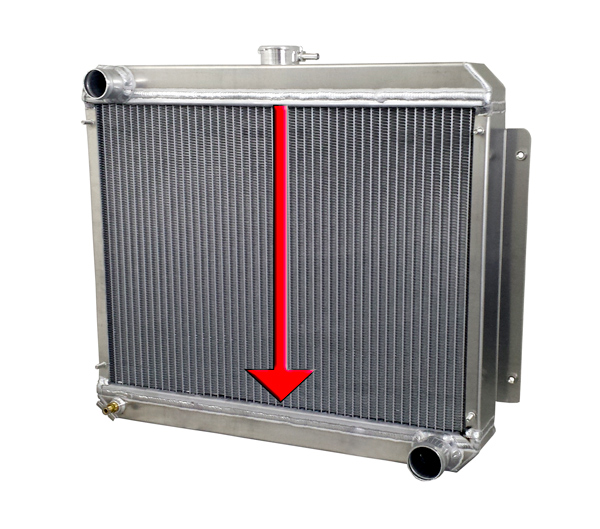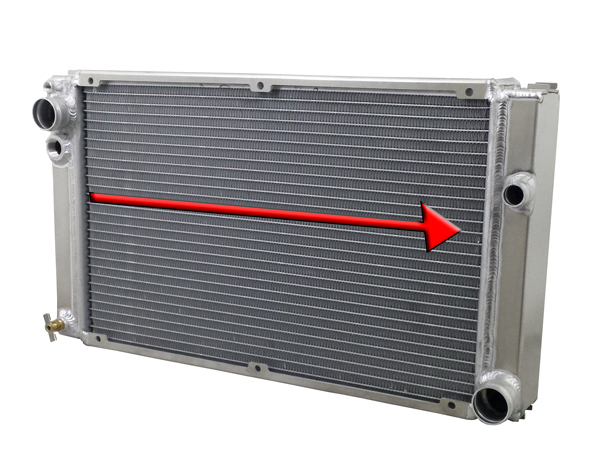DOWNFLOW RADIATORS VS. CROSSFLOW RADIATORS. WHAT'S THE DIFFERENCE?
Radiators come in a variety of configurations. Each possessing it's own unique combination of fittings and features to work for the vehicle they were intended for. The starkest difference when it come to radiator types isn't the engine they are made for, or even the heat dissipation capacity they posses, but rather the placement of the tanks and how the radiator is positioned in a vehicle.
The two main configurations can be broken down into 2 categories; Crossflow radiators; which have the tanks on either side of the core with the radiator tubes running horizontally and Downflow radiators; which have the tanks on top and bottom of the core the radiator tubes running vertically.
We often get asked the question, "Do you have a crossflow version of the radiator for this XYZ model car?" or "Will a crossflow offer better cooling?"
The best way to answer the question Of "Which Cools Better?", is to first think about a radiator design and how it works.
Hot coolant flowing from the engine enters one tank, then passes through the tubes in the radiator core to the other tank, which then passes the coolant back into the engine. While the coolant is in the tubes of the core, the heat from the coolant transfers to the tube wall and fins. The passage of air over the core dissipates the heat transferred to the tubes and fins and the cooled down coolant is then passed back through the engine to start the cycle over. The more tube surface area there is, the better a radiator can dissipate heat and cool.


So, if you have both a downflow and crossflow radiators made out of the same materials, using the same build methods and using the same core dimensions, then they will provide the same level of cooling, regardless of their position.
The primary factor that will determine whether a downflow radiator or crossflow radiator is right for your vehicle comes down to the space under the hood. Dowflow radiator tend to be taller than wider. They were the standard radiator configuration for most older vehicle and will often fit better in older applications; especially older trucks and street rods. Crossflow radiator are the opposite, they are usually wider than they are tall and work well in vehicle with low profile hoods with limited vertical space. Crossflow radiator systems can also be offer in "Double Pass" or "Triple Pass" configurations which separates coolant that has been cooled from the coolant to be cooled. To learn more about Crossflow Pass Systems, checkout our upcoming article: Double & Triple Pass Radiators. Do I Need One?
In the case of which configuration to choose; it really comes down to surface area and space available. If the downflow and crossflow radiator both have the same core dimensions and surface area, they will cool the same. In the case that one options is a larger radiator and has more surface area of core exposed; then that option will provide a cooling increase.
